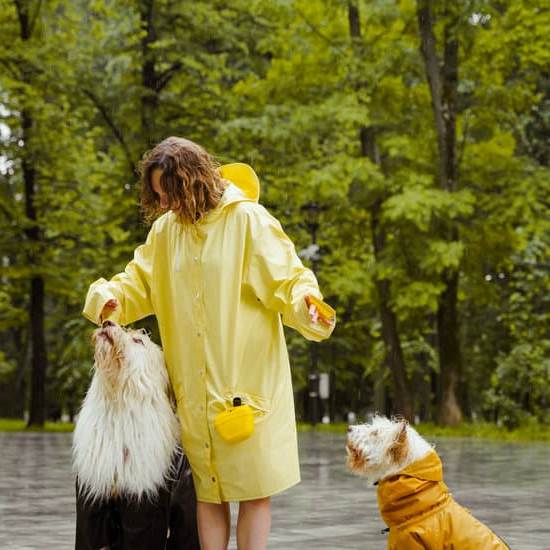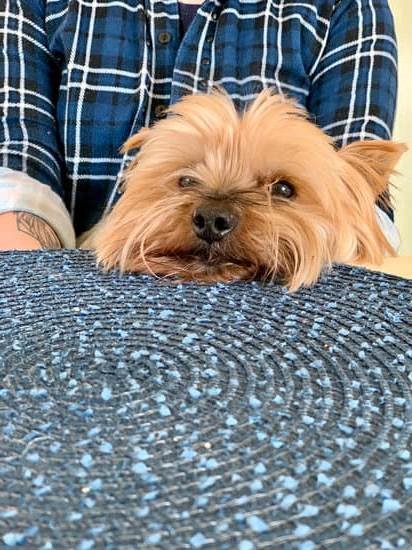If you have a dog that frequently exhibits nervous peeing behavior, it’s important to address this issue promptly. Nervous urination can not only be embarrassing and inconvenient but can also affect your dog’s overall well-being and confidence. In this article, we will explore the significance of understanding nervous urination in dogs and provide valuable insights on how to train your dog not to nervous pee.
Nervous peeing is a common problem for many dogs, especially those that are anxious or lack confidence. It may occur in various situations, such as when meeting new people or animals, during loud noises or sudden movements, or even when faced with unfamiliar environments. Identifying and addressing the triggers of nervous peeing is crucial in helping your dog overcome this behavior.
Recognizing anxiety-inducing situations is the first step towards tackling nervous urination in dogs. By understanding common triggers and paying attention to signs of anxiety or nervousness in your dog, you can begin to address their fears and insecurities. The link between fear and urination in dogs is real, and by addressing the underlying emotions causing nervous peeing, you can make significant progress in training your dog not to engage in this behavior.
By establishing trust and confidence with your furry friend, you can set a solid foundation for training them not to nervous pee. Building a strong bond and creating a secure environment are essential elements of successfully overcoming their anxiety-related woes. Incorporating basic obedience training techniques can also boost their confidence levels and make them feel safe during potentially triggering situations.
In the next sections of this article, we will delve deeper into identifying triggers, desensitizing your dog to anxiety-inducing situations through gradual exposure, counterconditioning techniques to replace nervous behavior with positive associations, building confidence through exercises and training, seeking professional help when needed, and maintaining progress through patience and consistency. By following the strategies outlined in this article, you can help your dog triumph over nervous urination and strengthen your bond along the way.
Identifying the Triggers
Many dogs experience nervous peeing as a result of anxiety or fear. It is important for dog owners to understand the triggers that lead to this behavior in order to effectively address it. By recognizing anxiety-inducing situations, you can take proactive steps to help your dog overcome their nervousness and promote their overall well-being and confidence.
Common triggers that often lead to nervous peeing in dogs include new environments, loud noises, unfamiliar people or animals, and certain handling procedures such as nail trimming or vet visits. It is essential to pay attention to your dog’s body language and behavior when they encounter these triggers. Some signs indicating anxiety or nervousness in dogs include excessive panting, trembling, pacing, lip licking, avoiding eye contact, hiding, or cowering.
Fear and urination have a strong link in dogs. When dogs are scared or anxious, their body releases stress hormones that can impact bladder control and result in involuntary urination. Therefore, it is crucial to address the underlying fear or anxiety that leads to nervous peeing instead of simply focusing on the urinary issue itself.
To identify specific triggers for your dog’s nervous peeing behavior, keep a record of incidents where they exhibit this behavior along with details about the situation. By noting down patterns and recurring stimuli present during these incidents, you can start recognizing common factors that trigger your dog’s anxiety response.
Once you have identified these triggers for your dog’s nervous peeing behavior, you can then move on to implementing strategies that will help desensitize them and build their confidence in these situations.
Setting a Solid Foundation
The significance of building a strong bond with your dog
Before diving into the specific training techniques to address nervous peeing in dogs, it is essential to establish a solid foundation built on trust and confidence. Dogs that feel secure and have a strong bond with their owners are more likely to overcome their anxiety and exhibit confident behavior. Building this bond requires time, patience, and consistent positive interactions.
To strengthen the bond with your dog, spend quality time together engaging in activities they enjoy, such as daily walks, playtime, or training sessions. These activities not only provide mental stimulation but also create opportunities for positive reinforcement. Additionally, using calm and reassuring tones when interacting with your dog can help alleviate any existing anxiety or nervousness they may have.
Tips for creating a secure and positive environment for training
Creating an environment that promotes trust and confidence is crucial for effectively training your dog not to nervous pee. Here are some tips on how to establish a secure and positive environment:
- Consistency: Dogs thrive on routines, so establishing consistent feeding schedules, exercise routines, and daily rituals helps them feel secure.
- Safety: Ensure that your home provides a safe space for your dog by removing potential hazards or triggering stimuli. Provide them with a comfortable resting area where they can retreat when feeling anxious.
- Positive reinforcement: Reward desired behaviors with treats, praise, or playtime. This encourages your dog to associate obedience and calmness with positive outcomes.
- Avoid punishment: Punishments can exacerbate anxiety in dogs rather than reduce it. Instead of punishing nervous behavior, focus on rewarding calmer responses during anxiety-inducing situations.
Basic obedience training techniques to boost your dog’s confidence
Training your dog in basic obedience commands serves two purposes: it establishes you as the leader and builds your dog’s confidence. When dogs understand what is expected of them, they feel more secure and less anxious. Basic obedience commands to focus on include sit, stay, down, and recall.
Begin training sessions in a quiet and familiar environment free from distractions. Use positive reinforcement techniques such as treats, praise, or play to reward correct responses. Start with short training sessions and gradually increase the duration as your dog becomes more comfortable and confident.
It is important to remain patient during the training process. Every dog learns at their own pace, so be consistent and celebrate small victories along the way. As your dog gains confidence through obedience training, they will be better equipped to handle anxiety-inducing situations and reduce nervous peeing behavior.
Gradual Exposure
Desensitization is a crucial step in helping your dog overcome nervous urination. By gradually exposing your dog to anxiety-inducing situations, you can help them become desensitized and reduce their fear response. Here are some steps to follow when desensitizing your dog:
- Identify the triggers: Start by identifying the specific situations or stimuli that trigger your dog’s nervous peeing. Common triggers include meeting new people, encountering loud noises, or being in unfamiliar environments. Keep a record of these triggers so you can plan your desensitization sessions accordingly.
- Start small: Begin with controlled and manageable exposures to the triggering situations. For example, if your dog becomes anxious around strangers, start by having a friend or family member come over and gradually increase the duration and proximity of their interaction with your dog over several sessions.
- Use positive reinforcement: During each exposure session, reward calm behavior with praise, treats, or toys. This will help create positive associations with the triggering situation and reinforce desired behavior. It’s important to note that punishment should never be used during desensitization as it can worsen anxiety.
- Gradually increase difficulty: As your dog becomes more comfortable with each exposure, gradually increase the difficulty level. Introduce new elements or intensify the stimulus while ensuring that it remains manageable for your dog. For example, if your dog is afraid of loud noises, start with recordings of low-volume sounds and gradually increase the volume over time.
- Be patient and go at your dog’s pace: Each dog will progress at their own pace during desensitization training. Some dogs may take longer than others to become desensitized to certain triggers, so it’s important to be patient and go at their pace.
By following these steps and consistently working on desensitizing your dog to triggering situations, you can help them overcome nervous urination and build their confidence. It’s important to remember that desensitization will take time, so be prepared for setbacks along the way. With patience and dedication, you can help your dog develop a more positive response to anxiety-inducing situations.
| Triggers | Desensitization Steps |
|---|---|
| Meeting new people | Start with brief introductions and gradually increase duration and proximity of interactions. |
| Loud noises | Begin with low-volume recordings and gradually increase the volume over time. |
| Unfamiliar environments | Start by exposing your dog to controlled unfamiliar environments and gradually increase the level of novelty. |
Counterconditioning
Counterconditioning is a crucial aspect of training your dog not to nervous pee. By replacing your dog’s fearful behavior with positive associations, you can help them overcome their anxiety and build confidence in triggering situations. Here are some effective techniques for counterconditioning your dog:
- Redirecting Focus: One technique to countercondition nervous behavior is by redirecting your dog’s focus from fear to positive experiences. For example, if your dog gets anxious when meeting new people, you can ask the person to toss a treat or play with a favorite toy near them. This helps create a positive association between the trigger and something enjoyable for your dog.
- Rewards and Incentives: Using rewards is essential in counterconditioning. Whenever your dog displays calm behavior in anxiety-inducing situations, praise them and offer treats or toys as rewards. This reinforces the idea that being relaxed leads to positive outcomes. Gradually, your dog will learn that behaving calmly in these situations is rewarding.
- Integrating Positive Experiences: Another way to countercondition nervous behaviors is by incorporating positive experiences during triggering situations. Take your dog for walks in new environments or introduce them to friendly and well-behaved dogs for socialization. These positive interactions can help build their confidence and lessen their anxiety over time.
Remember, consistency is key when it comes to counterconditioning. Be patient and understanding with your dog throughout the process, as it may take time for them to change their response to triggers. With dedication and persistence, you can help your furry friend overcome their nervous peeing behavior and lead a happier, more confident life.
To further assist with this training process:
- Make sure you understand the signs of anxiety or nervousness in dogs so that you can identify when they are experiencing these emotions.
- Consult with a professional trainer or behaviorist who specializes in working with anxious dogs if necessary.
- Practice these counterconditioning techniques regularly, gradually increasing the level of difficulty or exposure to triggers as your dog progresses.
Building Confidence
One of the crucial steps in training your dog not to nervous pee is to focus on building their confidence. Dogs that lack confidence are more prone to anxiety and nervousness, which can lead to involuntary urination. By engaging in confidence-boosting exercises and training, you can help your dog overcome their fears and become more self-assured.
To begin with, it is important to provide your dog with opportunities for success. Start with simple obedience training exercises that they are familiar with and gradually increase the difficulty level as they gain confidence. This could include commands such as sit, stay, or come. Remember to always use positive reinforcement techniques, such as treats or praise, when your dog successfully completes a task.
In addition to basic obedience training, incorporating puzzle toys and interactive games into your dog’s routine can also help boost their confidence. These activities stimulate their minds and challenge them mentally, giving them a sense of achievement when they successfully solve a problem or complete a task. Examples of confidence-building exercises include food-dispensing toys, hide-and-seek games, or agility training courses.
Moreover, exposing your dog to new environments in a controlled manner can gradually increase their comfort level and build confidence. Start by introducing them to low-stress environments with minimal distractions and gradually progress to busier places with more stimuli. Providing positive experiences in these new environments through playtime or treats will reinforce positive associations and help alleviate any anxiety or nervousness they may feel.
Confidence-Boosting Exercises
| Exercise | Description |
|---|---|
| Agility Training | Setting up an agility course with hurdles, tunnels, and ramps for your dog to navigate through. |
| Novel Object Introduction | Introducing your dog to new objects or toys gradually, allowing them to explore and interact at their own pace. |
| Socialization Activities | Arranging playdates with well-behaved and friendly dogs to help build your dog’s confidence in social settings. |
By incorporating these confidence-boosting exercises and training techniques into your dog’s routine, you can help them overcome nervous peeing behavior. Remember to be patient and consistent throughout the process, celebrating even small achievements along the way. Building a confident and happy relationship with your dog will not only address the issue of nervous urination but also contribute to their overall well-being.
Seeking Professional Help
Recognizing signs that professional assistance might be needed
While training your dog not to nervous pee can often be accomplished with consistent and patient efforts, there may be instances where seeking professional help is necessary. It’s important to recognize the signs that indicate you may need the assistance of a dog trainer or behaviorist. Some signs include persistent or worsening anxious behaviors, extreme reactions to triggering situations, or if your dog’s nervous peeing is causing significant distress for both you and your pet.
Benefits of enlisting the help of a qualified dog trainer or behaviorist
When considering whether to consult a professional, it is worth noting the numerous benefits they can bring to the training process. A qualified dog trainer or behaviorist has extensive knowledge and experience in working with nervous dogs and can provide valuable insights into your specific situation. They can assess your dog’s behaviors, identify underlying causes of anxiety, and develop a personalized training plan tailored to address their needs.
Moreover, professionals can guide you on how to effectively implement training techniques and methods, ensuring that they are being utilized correctly. They will also help you set realistic goals for your dog’s progress and provide ongoing support throughout the training journey.
What to expect during a professional consultation and potential training approaches they may suggest
During a professional consultation, a trainer or behaviorist will typically conduct an initial assessment of your dog’s behaviors and history. This involves gathering relevant information about their nervous peeing episodes, triggers, and any efforts made in training so far.
Based on their evaluation, the professional may suggest various training approaches tailored to your dog’s unique needs. These approaches could include desensitization exercises, counterconditioning techniques, behavior modification strategies, or other proven methods designed specifically for anxious dogs.
The professional will work closely with you to guide you through each step of the selected approach and provide ongoing support throughout the training process. They will also educate you on how to implement training techniques effectively, reinforce positive behaviors, and manage setbacks.
Remember that seeking the help of a professional does not mean you have failed as a dog owner. Rather, it shows your commitment to providing the best care and training for your beloved pet. With their expertise and guidance, you can address your dog’s nervous peeing behavior more effectively and work towards building a confident and happy relationship with them.
Patience and Consistency
Maintaining progress and overcoming setbacks are crucial aspects of training your dog not to nervous pee. It is important to understand that training is a continuous process that requires patience and consistency. By remaining dedicated to the training techniques discussed in this article, you can help your dog overcome their nervous peeing behavior and build a confident and happy relationship together.
One key element in maintaining progress is consistency. Dogs thrive on routine and predictability, so it’s essential to establish consistent rules and expectations for your dog. This includes consistently reinforcing positive behaviors, using the same commands, and following the same training methods. Consistency helps your dog understand what is expected of them, which can reduce anxiety and uncertainty.
Another important aspect of maintaining progress is regular practice. Training sessions should be a part of your daily routine, even as your dog begins to show improvement. Practice reinforces the learned behaviors and strengthens the neural pathways associated with those behaviors. Consistent practice will help solidify your dog’s understanding of appropriate urinary behavior and minimize the chances of regression.
It’s also important to remain patient throughout the training process. Nervous urination is not a problem that can be solved overnight, and progress may occur gradually. Each dog learns at their own pace, so it’s crucial not to become discouraged if you experience setbacks or slower progress than anticipated. Patience and understanding will go a long way in helping your dog gain confidence and overcome their nervous peeing tendencies.
By maintaining progress through consistency, regular practice, and patience, you will ultimately help your dog overcome their nervous peeing behavior. Remember that every small step forward is a reason to celebrate, whether it’s going longer without accidents or displaying increased confidence in anxiety-inducing situations. Together with your dedication and love, you can create a positive environment for your dog to thrive in while building a strong bond based on trust and confidence.
Conclusion
In conclusion, addressing nervous peeing behavior in dogs is crucial for their overall well-being and confidence. By understanding the triggers and signs of anxiety in your dog, you can begin to establish a solid foundation of trust and confidence. Through gradual exposure and counterconditioning techniques, you can desensitize your dog to triggering situations and replace nervous behavior with positive associations.
Building your dog’s confidence is an ongoing process that requires patience and consistency. By engaging in confidence-building exercises and gradually increasing their comfort level in new environments, you can help them overcome their nervousness. However, it’s important to recognize when professional help may be needed. A qualified dog trainer or behaviorist can provide guidance and suggest training approaches tailored to your dog’s specific needs.
Throughout this journey, it’s essential to celebrate your dog’s triumphs and achievements. Recognize the progress they have made and continue to build a confident and happy relationship with them. Remember that training is a continuous process, so maintaining consistency and regular practice will be vital in overcoming setbacks.
By dedicating time and effort to train your dog not to nervous pee, you are not only improving their quality of life but also strengthening the bond between you and your furry companion. With patience, consistency, and celebration of milestones along the way, you can help your dog overcome their fears and live a confident, happy life free from nervous urination.
Frequently Asked Questions
How do I stop my dog from peeing nervous?
To stop your dog from peeing when nervous, it is important to understand the root cause of their anxiety or nervousness. Dogs may exhibit this behavior due to fear, separation anxiety, unfamiliar surroundings, past traumatic experiences, or even lack of socialization. One effective approach is to gradually expose your dog to the triggers that make them nervous in a controlled and positive manner.
This can help desensitize them over time and reduce their anxiety. Additionally, providing a safe and comfortable environment for your dog can also help alleviate their nervousness. Consistency in routine, positive reinforcement training, and seeking professional guidance if needed are all key elements in addressing and resolving this issue.
Do dogs grow out of nervous peeing?
Whether dogs grow out of nervous peeing largely depends on the underlying cause and how it is addressed. In some cases, puppies that display nervous peeing as a result of excitement or lack of bladder control may outgrow this behavior with proper training and maturation.
However, if the anxious urination is rooted in deeper emotional issues such as fear or anxiety disorders, it may require ongoing management and training throughout the dog’s life. It is essential to identify the specific factors causing your dog’s nervous peeing and work towards addressing them effectively.
Why does my dog pee when nervous?
Dogs may pee when they are feeling nervous for several reasons. Urinating can be a natural response associated with fear or submission in dogs. When faced with situations that trigger their nerves or anxiety levels rise, they may involuntarily release urine as a way to communicate their unease or appease potential threats by displaying submission behaviors.
This instinctual response is more common in young puppies due to their developing bladder control, but adult dogs can also exhibit this behavior due to various psychological factors or past negative experiences. Understanding these triggers and working on creating a calm and supportive environment for your pet can help minimize their nervous urination tendencies over time.

Welcome to the blog! I am a professional dog trainer and have been working with dogs for many years. In this blog, I will be discussing various topics related to dog training, including tips, tricks, and advice. I hope you find this information helpful and informative. Thanks for reading!





